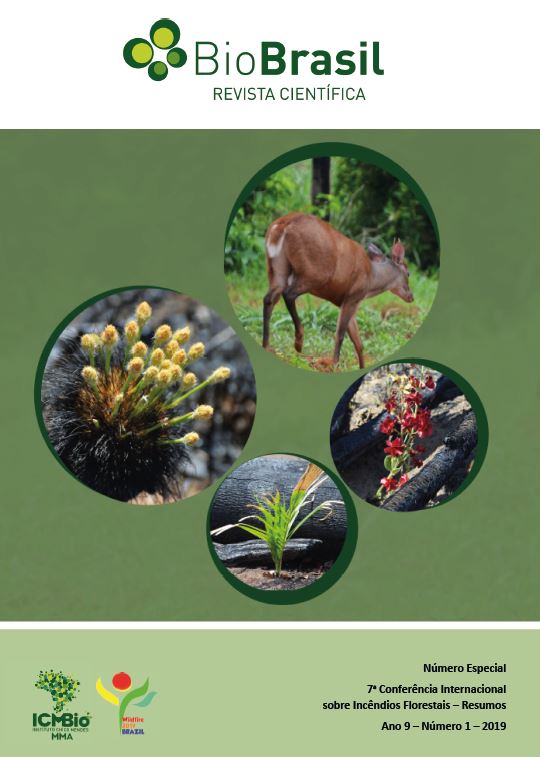Integrated Fire Management in Indonesia - implementation in Indonesia
DOI:
https://doi.org/10.37002/biodiversidadebrasileira.v9i1.943Palabras clave:
Indonesia, forest fires, Integrated Fire Management, IFMResumen
Unmitigated forest fire in Indonesia represents a serious risk to human health, the environment, the national economy and international dimplomacy. At the same time it is one of the few tools that the smallholder farming community have ready access to for livelihood sustainbilty. Indonesia is a tropical environment and is comprised the worlds largest area of tropical peatland (which can only form over thousands of years in the absence of fire). Fire dates back to human habitation on the islands and large scale fire correlates with the introduction of industrial agriculture and forestry which expanded heavily in the 1970's through to today. Indonesia's peatlands account for approximately 2.5% of total global carbon emissions, and approximately 95% of this is the result of burning peatlands. The smoke haze from fire is known to cause increased human mortality as well. There are no natural fire causes in Indonesia, humans are the source of ignition for all manner of needs including: livelihood sustainability, conflict resolution, agricultural planting and more. The implications and impacts of these fires on rural families working to live, forestry companies managing plantations and government management is complex. Integrated Fire Management (IFM) has begun to be implemented in Indonesia by one company following the 2015 fire episode. Working across a large industrial forestry landscape, comprised +2 million hectares, we will discuss the program of taking IFM from theory to practice in a tropical environment intensly pouplated with local communities. Following the UNFAO "5R's" model we will describe the implemented elements of Risk Reduction, Readiness, Response, Recovery and Research. It is hoped that through the collation and tion of IFM practices we can work to create common understanding and sense of field practices toward increasingly sustainable forest and fire management. History has shown that some landscapes have missed the correct balance in fire management, causing problematic fire regimes (too many and also too few), or increased costs through mis-managed suppression tools like aircraft, or have mis interpreted a community fire prevention need and imported a developed country prevention program to a developing country and missed the real needs of the local people. IFM in practical use is a method of analysing and implementing smart fire management practices matched to the local environment and local people needs. This paper will report on one case of IFM implementation in a tropical forested environment in Indonesia.
Descargas
Descargas
Publicado
Número
Sección
Licencia
Derechos de autor 2021 Biodiversidade Brasileira - BioBrasil

Esta obra está bajo una licencia internacional Creative Commons Atribución-NoComercial-SinDerivadas 4.0.
Os artigos estão licenciados sob uma licença Creative Commons Atribuição-NãoComercial-SemDerivações 4.0 Internacional (CC BY-NC-ND 4.0). O acesso é livre e gratuito para download e leitura, ou seja, é permitido copiar e redistribuir o material em qualquer mídia ou formato.











